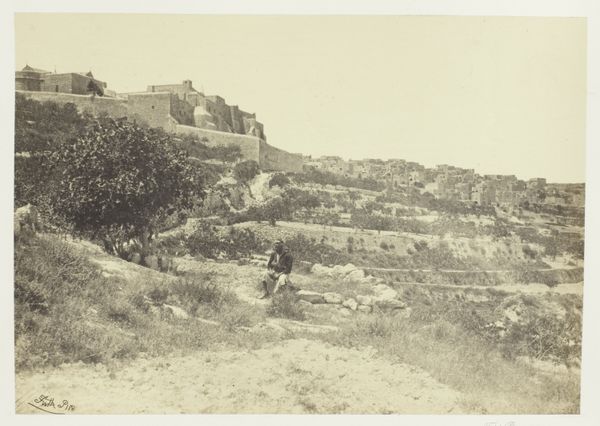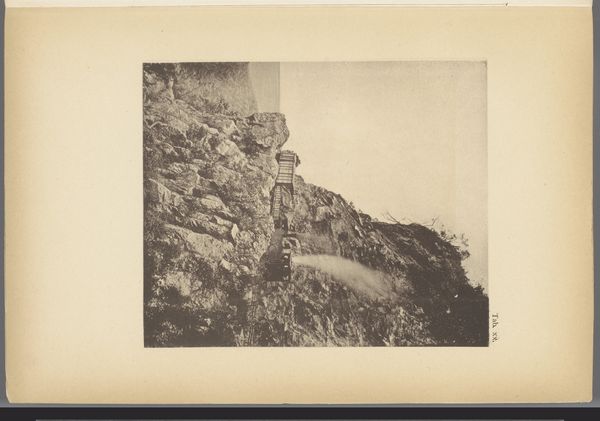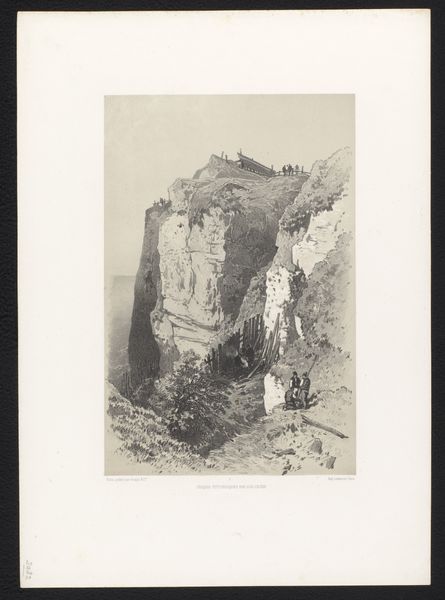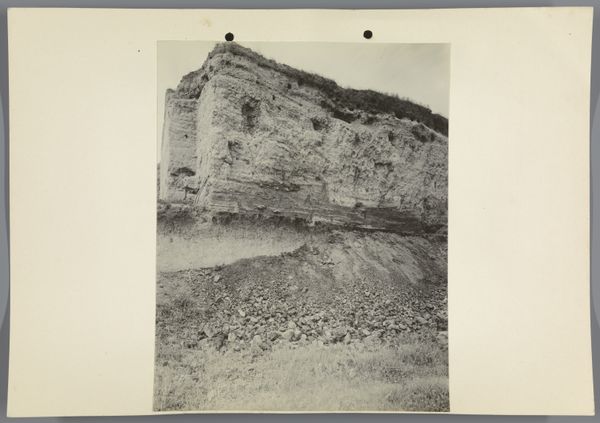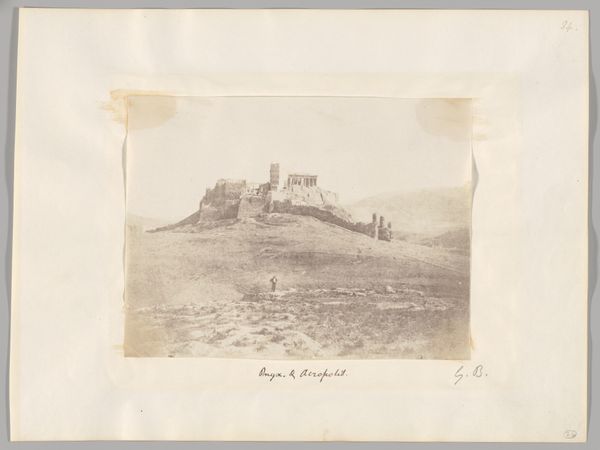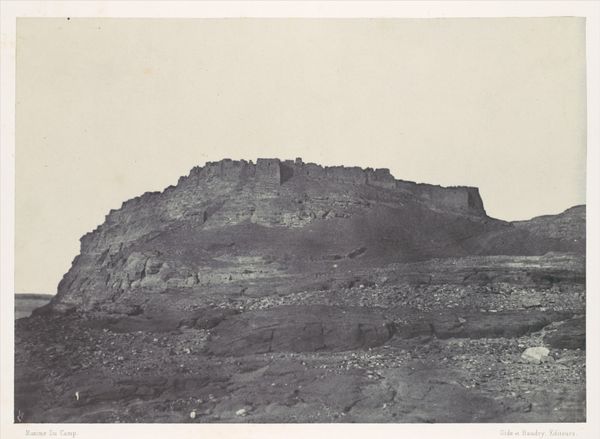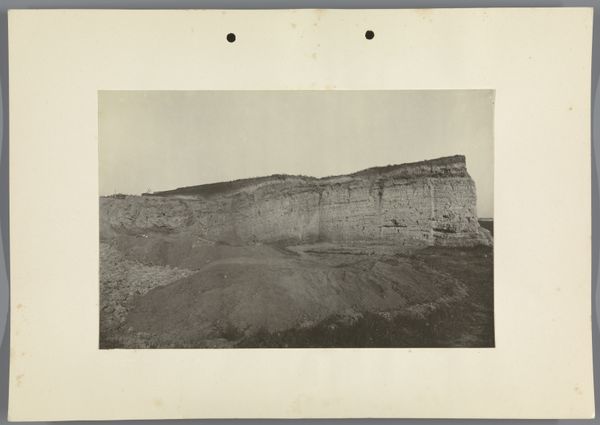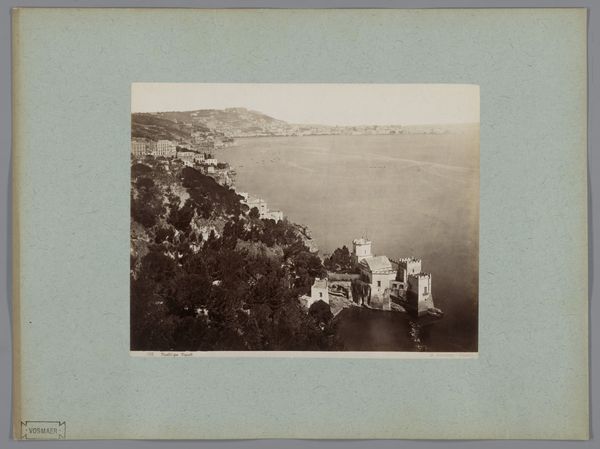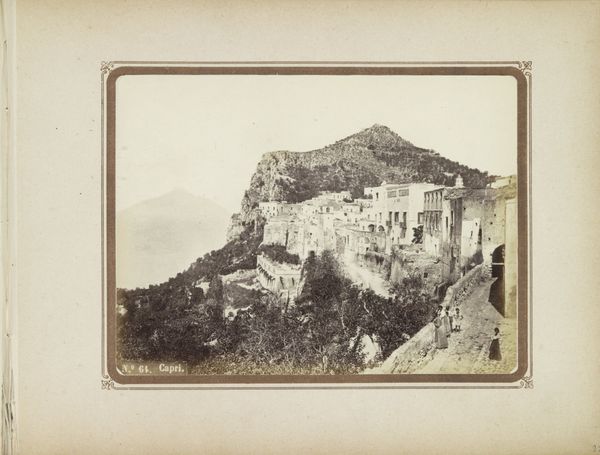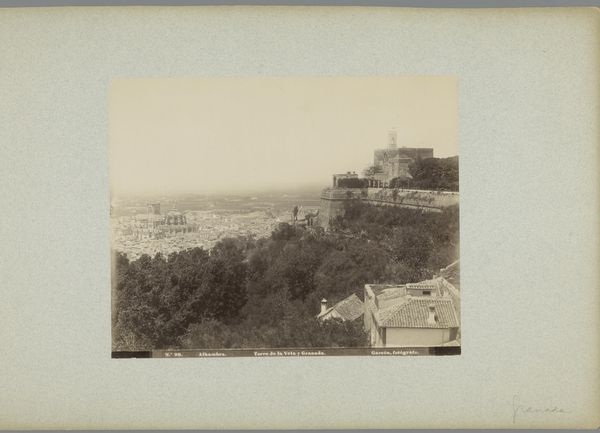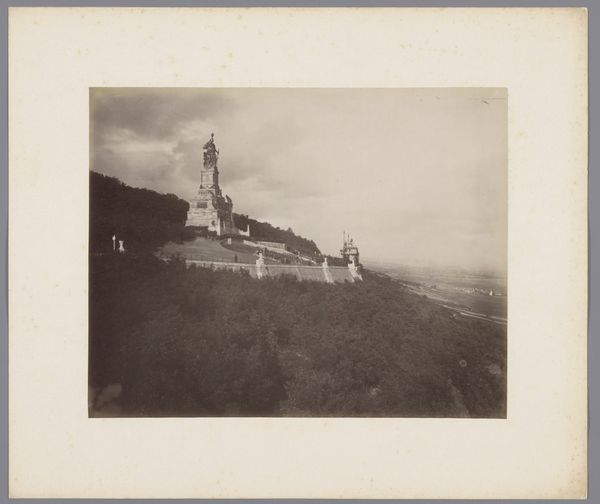
photography, albumen-print
#
landscape
#
photography
#
albumen-print
#
realism
Dimensions: height 310 mm, width 422 mm
Copyright: Rijks Museum: Open Domain
Curator: Editor: This albumen print, titled "Grand Hotel Schreiber in Rigi Kulm," is believed to be from between 1895 and 1930. The sharp detail of the hotel atop the hill against the landscape seems to announce industrial progress. How would you interpret this work? Curator: It’s interesting how this photograph marries the natural landscape with manufactured forms. We must consider the process. An albumen print involves coating paper with egg whites, a technique prevalent at the time for its ability to produce incredibly detailed images. But look closer. The very act of transporting tourists and constructing such a hotel changed both labor relations and consumption practices on the mountaintop. How did the raw materials reach such a location, and who was involved in constructing the built environment? Editor: So, you're emphasizing that the luxury afforded by this grand hotel came at a material and perhaps human cost? It shifts my understanding from simple documentation to considering labour. Curator: Exactly. The material conditions dictate the image. Reflect on where the photographer positioned themselves and the tools they brought. By focusing on the ‘how’ and the ‘what’ of its creation and consumption, we unearth broader socio-economic issues underpinning even seemingly serene landscape photographs. What appears as grand architecture in fact conceals resource consumption, labour and transportation. Editor: It really makes you consider the environmental impact that went into a photograph, going beyond the final aesthetics of it. Thanks for opening my eyes! Curator: It's a crucial lens for understanding our interaction with art. Looking closer unveils layers that are easily missed if we stick only to the surface appearance.
Comments
No comments
Be the first to comment and join the conversation on the ultimate creative platform.
